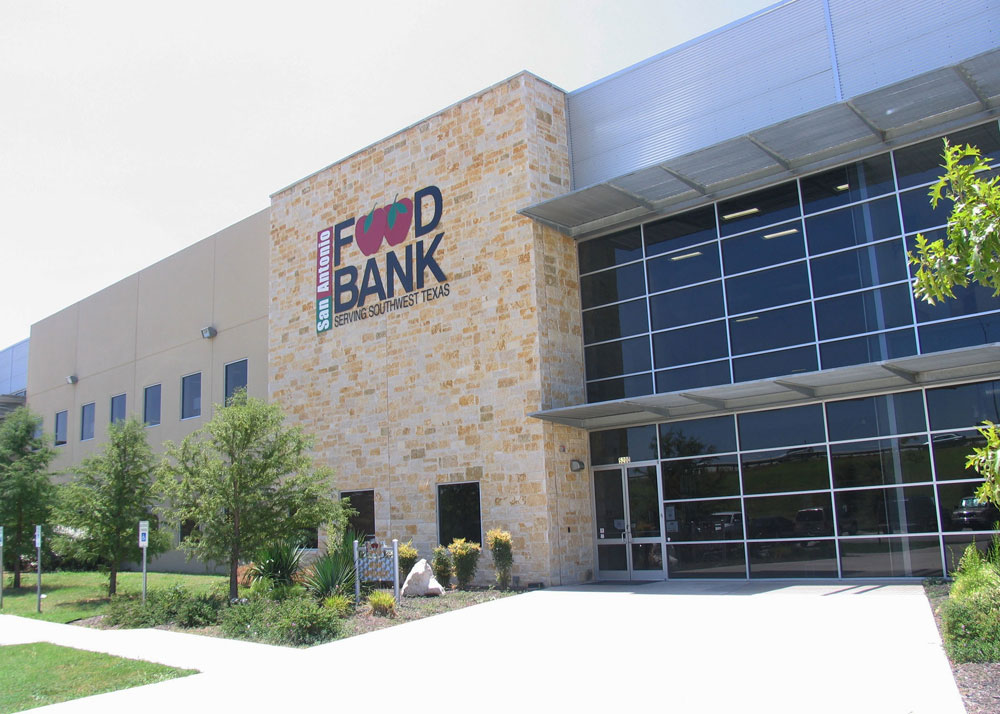
June 9, 2020; High Country News
CEO Blake Young has been with Sacramento Food Bank & Family Services for over two decades. If you were to attend one of their drive-through pop-up food distribution events, you would be impressed at how the organization has pivoted and adapted to service delivery in the time of COVID.
Young and his team secured personal protective equipment, utilized larger spaces for safe distribution, and have met an increased demand for food—a huge increase in demand. Earlier this month, Young tells High Country News that before the coronavirus pandemic, the organization served approximately 150,000 people each month. In April and May, that number doubled to more than 300,000 people.
While every nonprofit program experiences an unexpected bump in demand now and then, with no end of the economic fallout in site, Young and many of his peers across the country are starting to prepare for increased food bank demand through 2021. He is also sounding an alarm about sustainability.
Meant as a stopgap measure to help people in crisis situations, food banks were never designed to provide ongoing nutritional support for mass food insecurity. With the $600 federal bump in unemployment compensation due to expire at the end of July, and stimulus checks long gone for families, the worst of the misery could be yet to come, for both families and nonprofit budgets.
It’s no secret that even prior to the catastrophic economic insecurity the COVID-19 pandemic has left in its wake, collectively, we were doing an embarrassingly poor job of making sure Americans of all ages had consistent access to nutritious food. NPQ has covered the issue of food insecurity, and the fallout from letting large numbers of different populations go malnourished, from various angles. From foundations in Detroit pivoting from glamorous new programs to address safety net issues, to scrappy nonprofits like the Appleseed Foundation clapping back against school policies that embarrass children for—well, being poor and wanting to eat lunch—it has been an ongoing topic of discussion across the sector.
Food insecurity among college students was also widespread before the pandemic. A 2019 study from the Association of American College and Universities found an astonishing 60 percent of students surveyed had experienced food insecurity during the previous semester. The study found students with particularly fragile safety nets, like those who had grown up in the foster care system or whose families were involved in the military, were some of the most vulnerable.
With widespread data on the negative impact improper nutrition has on overall health for children and adults alike, it is clear the stakes are high. As Dr. Sandra Hassink, American Academy of Pediatrics’ past president, explains it, those goes far beyond hunger pangs.
“The best medicine in the world will not be effective if I’m treating an undernourished child,” Hassink says. “For pediatricians, nutrition is health.”
Sign up for our free newsletters
Subscribe to NPQ's newsletters to have our top stories delivered directly to your inbox.
By signing up, you agree to our privacy policy and terms of use, and to receive messages from NPQ and our partners.
In the flutter of redirection and flow of foundation and grant monies during COVID-19, it appears there is no time to waste in directing collaboration, resources, and creativity towards food security. Both short-term and long-term actions are required.
Short-term solutions could include examining the supply chain to eliminate waste, engaging both the for-profit and non-profit sectors. Canada has launched a $50 million food surplus program which will redistribute food that would otherwise go unused by restaurants shuttered or operating at a reduced capacity in COVID.
Redirecting supply to eliminate waste makes good business sense as well. In Texas, Brothers Produce has developed a new business model where boxes of fresh produce are sold directly to customers instead of companies. This ensures that food surplus that would otherwise be thrown away is redistributed and helps to keep businesses afloat. Engaging nonprofits that once worked tirelessly to redirect food waste, like Food Recovery Network, which recovers cafeteria food, will be key.
Safety net programs also need the help of foundations and funders. In Woodland, California, Yolo Food Bank spent about $200,000 per month on food and operations last year. With increased demand, the nonprofit headed into June with monthly operating expenses of $350,000. According to Joy Cohan, director of philanthropic engagement, the food bank now is spending more per month than it is raising.
As for the long term, big ticket items like affordable long-term housing and how we support those in transitional housing need to be addressed. Housing people temporarily in hotels without access to a kitchen to prepare meals ensures they will be forced financially and logistically into eating food that may be unhealthy but is cheap and easy to store and prepare. From New York to California, even before COVID, out-of-control rent or the unattainable amounts of money needed to provide a security deposit to move into an apartment was sending families of four, five, six or more into extended hotel living. In February, Florida Today called them the “Invisible Homeless,” with many having felony convictions or bankruptcies that made them unattractive tenants. In New York, Girl Scout Troop 6000 operates out of a Sleep Inn hotel converted into a homeless shelter.
As for the increased demand at Yolo Food Bank and Sacramento Food Bank & Family Services, the data matches their anecdotal findings. According to the COVID Impact Survey, conducted by researchers at NORC at the University of Chicago for the Data Foundation, California’s food insecurity level more than doubled between March and April, from approximately 11 percent of the state’s population, to approximately a quarter, or about 10 million people. During the recession of 2008, food insecurity, which measures the number of participants who said they ran out of food and could not purchase more, increased by only three percent.
Hilary Hoynes, an economist at the University of California, Berkeley, tells High Country News that California had a high level of poverty even before the novel coronavirus arrived, largely because of California’s skyrocketing housing costs.
“Even in a state that has been proactive about raising the minimum wage and so on, the cost of housing just outpaced wage growth for a huge amount of the population,” Hoynes says. “Exacerbating California’s growing hunger is the fact that many people don’t qualify for federal support because they are undocumented.”—Carrie Collins-Fadell











